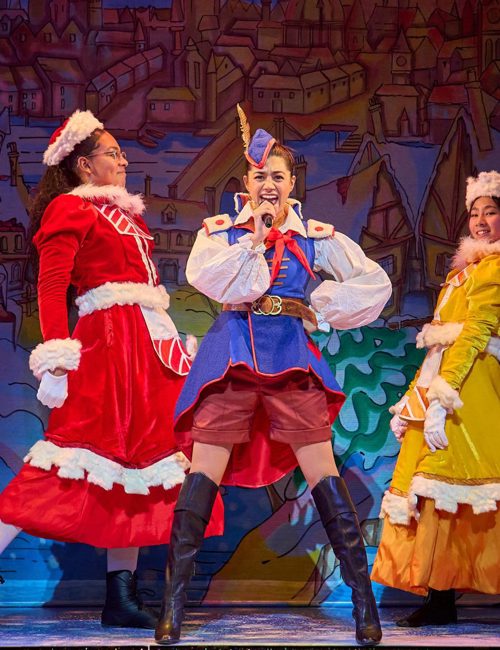2Magpies Theatre are set to stage a new play, Ventoux, centred around one of cycling's biggest controversies - the Tour de France race between Lance Armstrong and Marco Pantani. To do that, they plan to bring the thrill of the race right to the audience. We had a chat with co-director and company founder, Tom Barnes, to find out how they’re going to pull it off...

I've heard you’re going to use bikes on stage...
We were conscious to ensure that everything was moving - the whole thing is about motion. It’s a bike race, so we need that intensity. We’re using real road bikes clipped onto turbo trainers, which basically turned them into exercise bikes. We’re using them to imply the race, but there are also non-naturalistic moments where the bikes come out of the rollers and rear up, sort of like a wheelie. We use them in quite an unusual way to tell the story of Armstrong and Pantani’s lives and the things that happened after that race. They’re the focal point.
You’ll be using sound and video alongside this technique in the piece…
Yeah, they’re pretty big in this production. It’s set in traverse (audience on either side of the stage) so it’s essentially like a road. On opposing walls are big screens which will be streaming numerous things: the footage we filmed on Mont Ventoux in September in a car that had a camera in the front and the back. We’ll be playing the two together simultaneously so they sync and give the impression of movement. We’ve also got a live camera, and we’ll have other footage on screens that we can use as commentary, such as real bits of interview to remind us that it’s a theatrical show, but a real story. Elements of video bring it back into reality - it’s quite Brechtian, really. You are watching a representation of reality.
What will the cameras be showing?
The audience will see two things – what’s happening on stage and the performer’s perspective. There’s a strange connection between cameras and cycling - in the race, you see cameras on mopeds. What the camera offers is a first person perspective from the performers looking outwards. At the minute, GoPro cameras are very in vogue – they’re expensive, portable and you can put them on your helmet. It’s become part of the show. It also suggests the kind of media attention they had. We’ve got a few other little camera tricks up our sleeves.
What difficulties do you anticipate?
It’s twofold: dealing with a real event and telling someone else’s story, we have a duty to be sensitive and, to an extent, factual. We’re weighing up what we’re determining as facts, and our license as storytellers and theatre makers. It’s the battle of not doing anything that is liable, but making it as interesting as possible. Also, we don’t want to upset anyone - peoples relatives, for example. There are sensitivities. Secondly, computers can go wrong. The levels of tech that we’re using are unlike anything we’ve used before. We’re not technicians or computer programmers, so we’re learning how to use very specific bits of software and equipment to run the show. It’s quite a nice way round – we knew what we wanted to achieve and we’ve found a way there. That’s the challenge, making sure our files don’t corrupt.
Did you train for all the cycling involved?
To start the project, we went to Mont Ventoux and took a film crew with us – that’s how we captured all the video footage. When you’re there, you kind of have to cycle up the mountain yourself, on the bike. I had it in my head that I wanted to do this for a while, and I have a reasonable level of fitness, but it was unlike anything I’ve ever done before. Its 21km in length, and you climb about 1,500 metres – an average gradient of nine or ten metres. It’s relentless. There’s about 100 metres in the middle where it sort of levels off, but then it kick starts again. It takes hours.
Our other performer, Andy, is not a frequent cyclist, shall we say. He’s not been on a bike for longer than an hour and he’d never been on a road bike before. We got there in the end, but I don’t think he walked the next day. He won’t thank me for saying that, but it was a brilliant feat of endurance. Starting the project with that was amazing because we were in the place it all happened, experiencing the challenge. Especially at the memorial near the top to Tom Simpson, the cyclist from Nottingham who died on the tour. At the point where he came off his bike it was quite emotional. When you go past it you just think, “I’m now at a point that he never made.”
Will audiences be seeing realistic portrayals of cycling after you did all that?
There’s some pretty heavy cycling – the race strings the whole thing together. There are flashbacks and flashforwards from that moment which review and recolour the race. We’re quite aware that it’s a purely physical act, and we need to present that. It’s the most feared mountain and the hardest climb. We want to show people that.
2Magpies Theatre’s Ventoux will be at Leicester Curve Theatre in April, and will be coming to Lakeside on Monday 23 and Tuesday 24 May 2016.
2Magpies Theatre website
We have a favour to ask
LeftLion is Nottingham’s meeting point for information about what’s going on in our city, from the established organisations to the grassroots. We want to keep what we do free to all to access, but increasingly we are relying on revenue from our readers to continue. Can you spare a few quid each month to support us?




